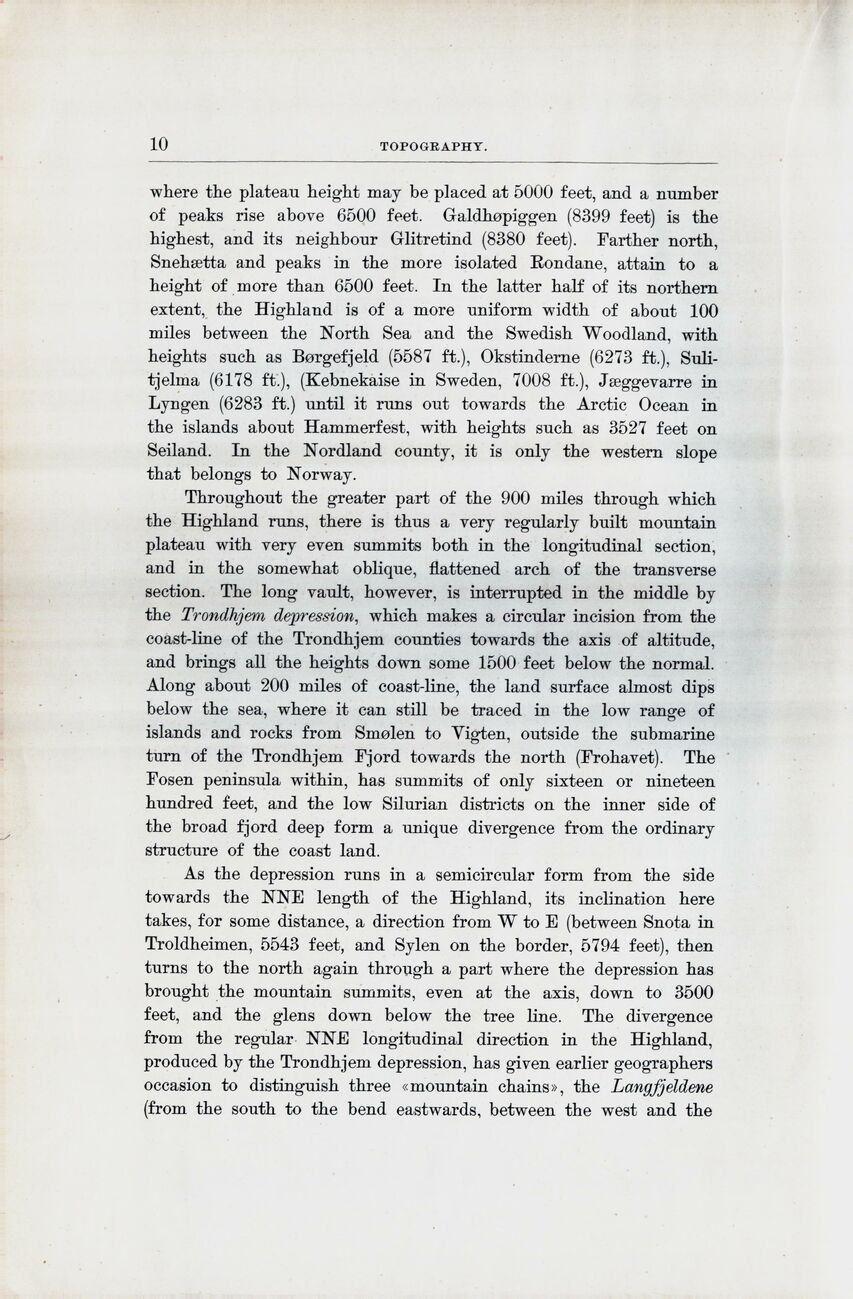
Full resolution (JPEG) - On this page / på denna sida - Topography, by Andr. M. Hansen

<< prev. page << föreg. sida << >> nästa sida >> next page >>
Below is the raw OCR text
from the above scanned image.
Do you see an error? Proofread the page now!
Här nedan syns maskintolkade texten från faksimilbilden ovan.
Ser du något fel? Korrekturläs sidan nu!
This page has been proofread at least once.
(diff)
(history)
Denna sida har korrekturlästs minst en gång.
(skillnad)
(historik)
where the plateau height may be placed at 5000 feet, and a number
of peaks rise above 6500 feet. Galdhøpiggen (8399 feet) is the
highest, and its neighbour Glitretind (8380 feet). Farther north,
Snehætta and peaks in the more isolated Rondane, attain to a
height of more than 6500 feet. In the latter half of its northern
extent, the Highland is of a more uniform width of about 100
miles between the North Sea and the Swedish Woodland, with
heights such as Børgefjeld (5587 ft.), Okstinderne (6273 ft.),
Sulitjelma (6178 ft.), (Kebnekaise in Sweden, 7008 ft.), Jæggevarre in
Lyngen (6283 ft.) until it runs out towards the Arctic Ocean in
the islands about Hammerfest, with heights such as 3527 feet on
Seiland. In the Nordland county, it is only the western slope
that belongs to Norway.
Throughout the greater part of the 900 miles through which
the Highland runs, there is thus a very regularly built mountain
plateau with very even summits both in the longitudinal section,
and in the somewhat oblique, flattened arch of the transverse
section. The long vault, however, is interrupted in the middle by
the Trondhjem depression, which makes a circular incision from the
coast-line of the Trondhjem counties towards the axis of altitude,
and brings all the heights down some 1500 feet below the normal.
Along about 200 miles of coast-line, the land surface almost dips
below the sea, where it can still be traced in the low range of
islands and rocks from Smølen to Vigten, outside the submarine
turn of the Trondhjem Fjord towards the north (Frohavet). The
Fosen peninsula within, has summits of only sixteen or nineteen
hundred feet, and the low Silurian districts on the inner side of
the broad fjord deep form a unique divergence from the ordinary
structure of the coast land.
As the depression runs in a semicircular form from the side
towards the NNE length of the Highland, its inclination here
takes, for some distance, a direction from W to E (between Snota in
Troldheimen, 5543 feet, and Sylen on the border, 5794 feet), then
turns to the north again through a part where the depression has
brought the mountain summits, even at the axis, down to 3500
feet, and the glens down below the tree line. The divergence
from the regular NNE longitudinal direction in the Highland,
produced by the Trondhjem depression, has given earlier geographers
occasion to distinguish three «mountain chains», the Langfjeldene
(from the south to the bend eastwards, between the west and the
<< prev. page << föreg. sida << >> nästa sida >> next page >>